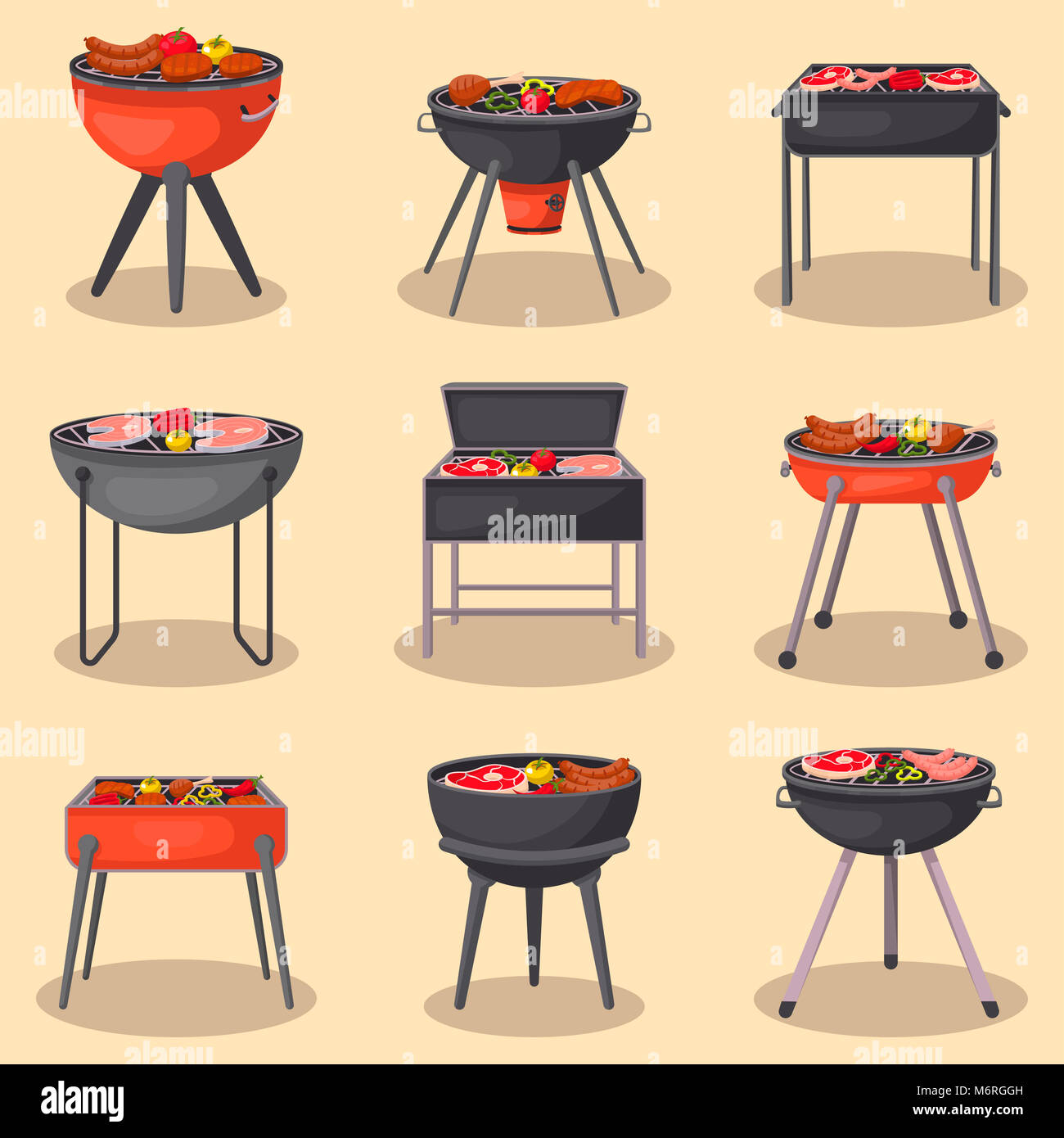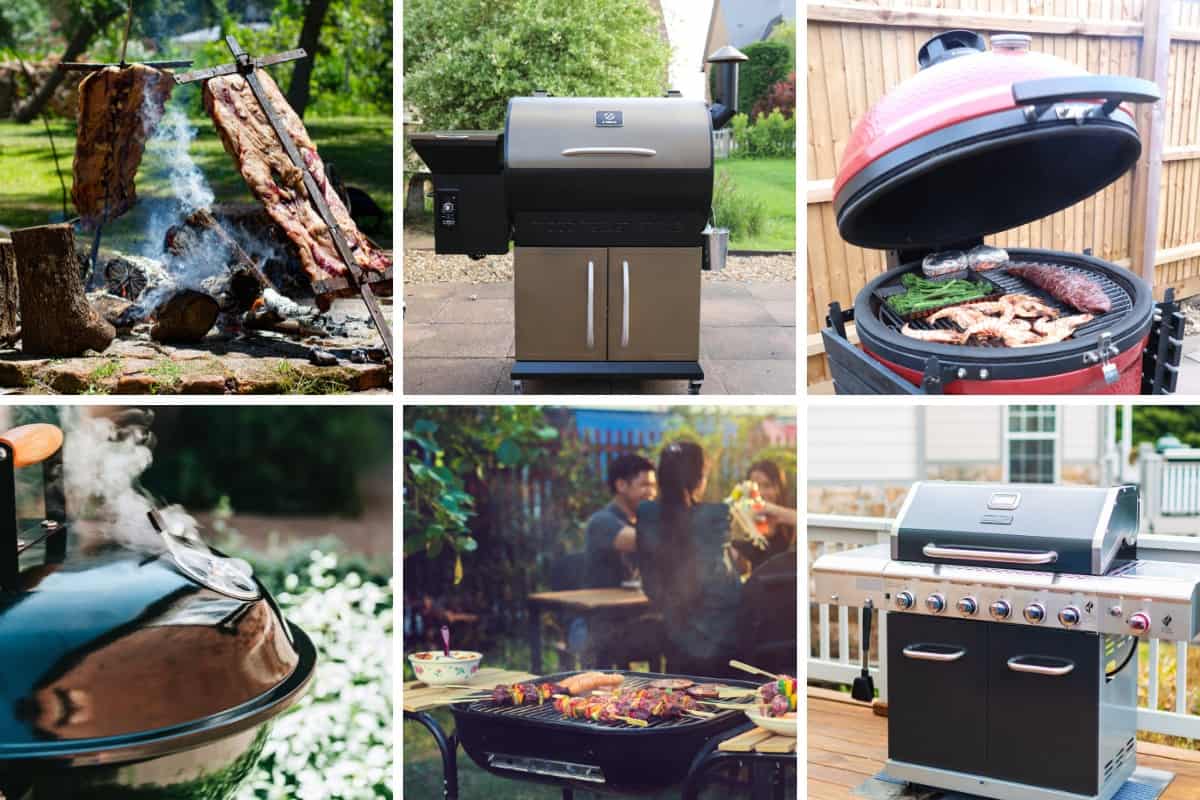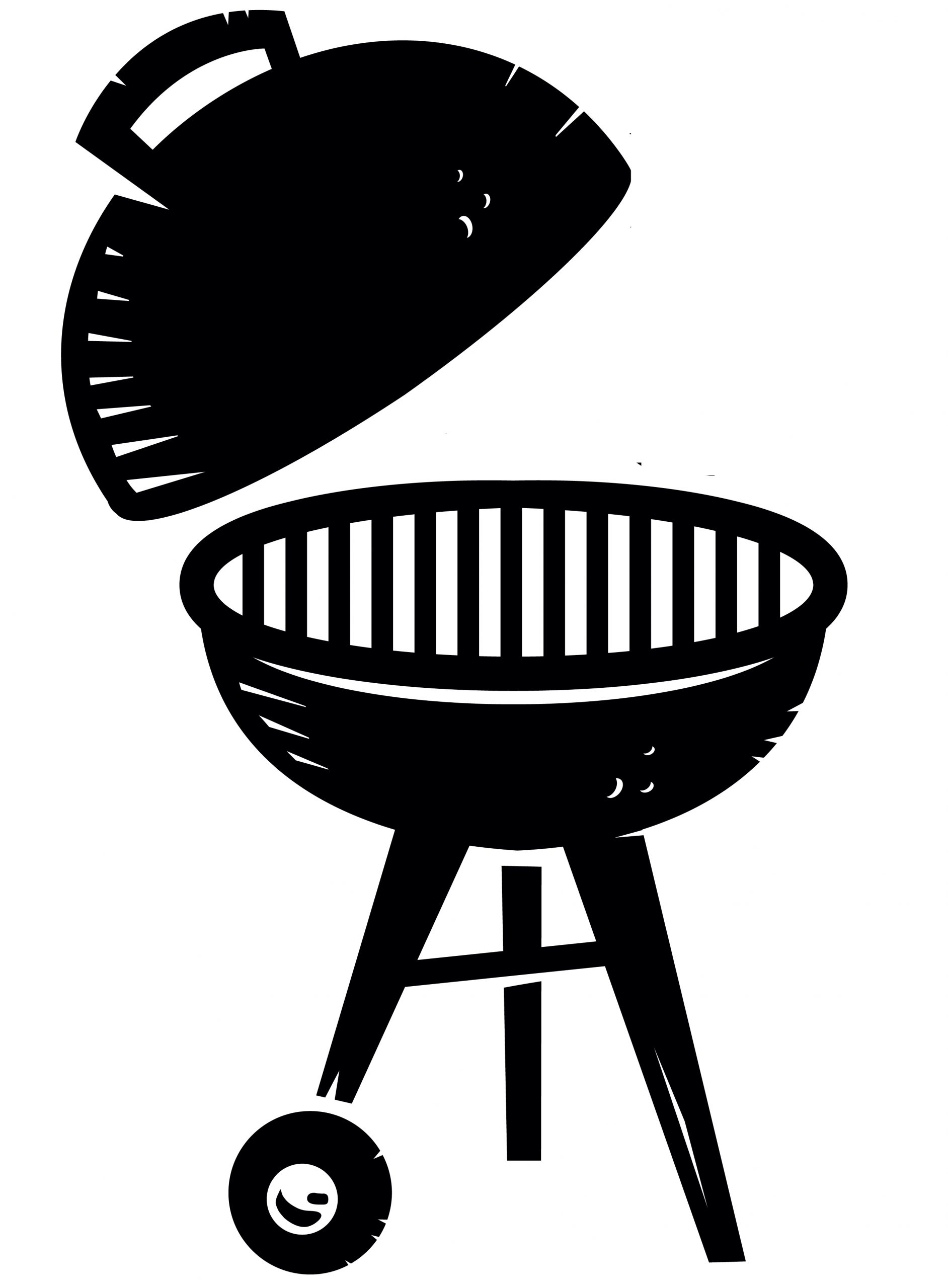When it comes to outdoor cooking, selecting the right grill is essential for achieving the perfect blend of flavor, convenience, and versatility. The market offers a wide array of grill types, each with unique features that cater to different cooking styles, preferences, and needs. This article will explore the various grill options, outlining their characteristics, benefits, and drawbacks. By understanding these differences, you'll be better equipped to choose the ideal grill for your next outdoor cooking experience.
Charcoal Grills
Charcoal grills remain one of the most beloved grill types, celebrated for producing that authentic smoky flavor that many grilling aficionados crave. These grills utilize briquettes or lump charcoal as their main fuel source, generating intense heat that, combined with smoke, imparts a distinctive taste that's hard to replicate with other grill types.
Benefits of Charcoal Grills:
- Flavor: The signature smoky flavor from charcoal grilling is its main appeal. The burning coals release a rich aroma that infuses the food, especially meats.
- High Temperatures: Capable of reaching extremely high temperatures, charcoal grills are perfect for searing steaks and other meats.
- Portability: Many charcoal grills are compact and easy to transport, making them ideal for camping, tailgating, or small outdoor spaces.
- Cost-Effectiveness: Generally, charcoal grills are more budget-friendly compared to other grill types, making them accessible to a wider audience.
Drawbacks of Charcoal Grills:
- Long Preheat Time: It can take 20 to 40 minutes for the charcoal to ignite and reach the ideal cooking temperature.
- Cleanup: Dealing with ash and leftover charcoal can be messy and time-consuming.
- Temperature Regulation: While achieving high heat is possible, maintaining an exact temperature can be challenging compared to other grill types.

Gas Grills
Gas grills are favored by those who prioritize convenience and efficiency in their grilling experience. Powered by either propane or natural gas, these grills provide quick ignition and adjustable heat settings, making them incredibly user-friendly.
Benefits of Gas Grills:
- User-Friendly: With just the push of a button, gas grills ignite instantly and are ready to cook in minutes, eliminating the hassle of lighting charcoal.
- Temperature Control: Most gas grills feature knobs for precise heat adjustments, allowing for versatile cooking at different temperatures.
- Reduced Cleanup: Gas grills produce less smoke and ash, resulting in easier cleanup after cooking.
- Added Features: Many gas grills include side burners, rotisseries, or griddles, enhancing cooking versatility.
Drawbacks of Gas Grills:
- Flavor: While convenient, gas grills do not impart the same rich, smoky flavor found in charcoal grilling. Some models come with smoker boxes, but the flavor may not be as pronounced.
- Higher Cost: Gas grills, particularly those connected to a natural gas line, can be more expensive initially compared to charcoal grills.
- Fuel Dependency: A steady supply of propane or a natural gas connection is necessary, limiting the portability of some models.

Electric Grills
Electric grills serve as an excellent alternative for individuals living in apartments or regions with strict fire regulations. These grills use electricity to power heating elements, making them suitable for indoor use or on balconies where gas or charcoal grilling may be prohibited.
Benefits of Electric Grills:
- Convenience: Simply plug in the grill, and you're ready to cook. Electric grills heat up quickly, providing a hassle-free grilling experience.
- Indoor/Outdoor Flexibility: Ideal for both indoor and outdoor use, electric grills enable year-round grilling.
- Compact Size: Most electric grills are designed to be portable, making them ideal for small spaces like balconies or kitchens.
Drawbacks of Electric Grills:
- Flavor: Electric grills typically lack the smoky flavor associated with charcoal or gas grills.
- Temperature Limitations: They generally do not reach the high temperatures required for searing meat as effectively as gas or charcoal grills.
- Power Dependency: Since they rely on electricity, electric grills are unsuitable for camping trips or areas without power access.
Pellet Grills
Pellet grills offer a unique combination of wood-fired flavor and modern grilling technology. Utilizing wood pellets as fuel, these grills feature electronic controls that automatically regulate temperature by feeding pellets into the fire.
Benefits of Pellet Grills:
- Wood-Fired Flavor: The use of wood pellets imparts a delicious smoky flavor, akin to charcoal grilling, but with greater consistency.
- Precision Temperature Control: Equipped with digital controls, pellet grills allow for precise temperature adjustments, similar to gas grills.
- Versatile Cooking Options: These grills can serve as smokers, ovens, or traditional grills, providing a wide range of cooking possibilities.
Drawbacks of Pellet Grills:
- Cost: Pellet grills often come at a higher price point than both charcoal and gas grills.
- Electricity Requirement: Like electric grills, pellet grills require an electrical outlet to operate their controls and feeding mechanisms.
- Maintenance Needs: Regular cleaning of the pellet hopper and auger is necessary to ensure proper function and prevent blockages.
Kamado Grills
Kamado grills, a type of ceramic grill, are renowned for their excellent heat retention and adaptability. They can be utilized as a grill, smoker, or even an oven, depending on the cooking method employed. Kamado grills primarily use charcoal as their fuel source, offering exceptional heat control.
Benefits of Kamado Grills:
- Superior Heat Retention: The thick ceramic walls ensure excellent heat retention and even cooking.
- Fuel Efficiency: Kamado grills consume less charcoal than traditional models due to their superior insulation.
- Wide Temperature Range: Capable of cooking at various temperatures, these grills allow for smoking, baking, roasting, and grilling.
- Durability: Made from high-quality ceramic, Kamado grills are built to last.
Drawbacks of Kamado Grills:
- Price: Generally, Kamado grills are more expensive than other charcoal options.
- Weight: Their ceramic construction makes them heavy and less portable compared to other grills.
- Learning Curve: Mastering temperature control in a Kamado grill may require some practice due to its sensitivity to airflow.
Portable Grills
For grilling enthusiasts who enjoy cooking on the go, portable grills are an excellent choice. These compact grills are lightweight and designed for easy transport, making them perfect for camping, picnics, or tailgating.
Benefits of Portable Grills:
- Easy to Transport: Lightweight and compact, these grills are simple to move and set up wherever needed.
- Variety of Fuel Options: Portable grills come in multiple types, including charcoal, gas, and electric, allowing you to choose based on your preferences.
- Budget-Friendly: Typically, portable grills are more affordable than their full-sized counterparts.
Drawbacks of Portable Grills:
- Limited Cooking Area: Due to their smaller size, portable grills offer limited cooking space, making them less ideal for large gatherings.
- Temperature Control Challenges: Smaller models may not provide the same level of temperature control as larger grills.
Conclusion
Choosing the right grill type hinges on several factors, including your cooking preferences, lifestyle, and available outdoor space. Whether you lean towards the traditional smoky flavor of a charcoal grill, the convenience of a gas grill, the versatility of a pellet grill, or the portability of a compact grill, there's a perfect option for every grilling aficionado. By understanding the features and advantages of each type, you can confidently select a grill that meets your needs and delivers mouthwatering results every time.
